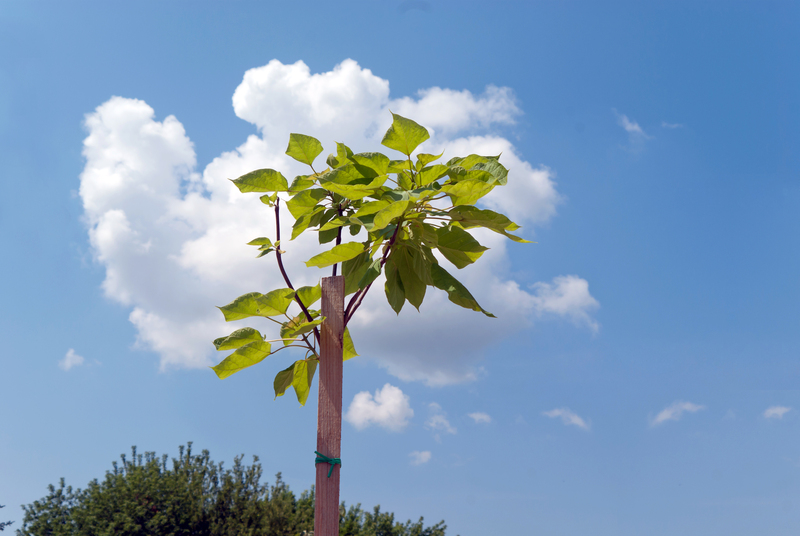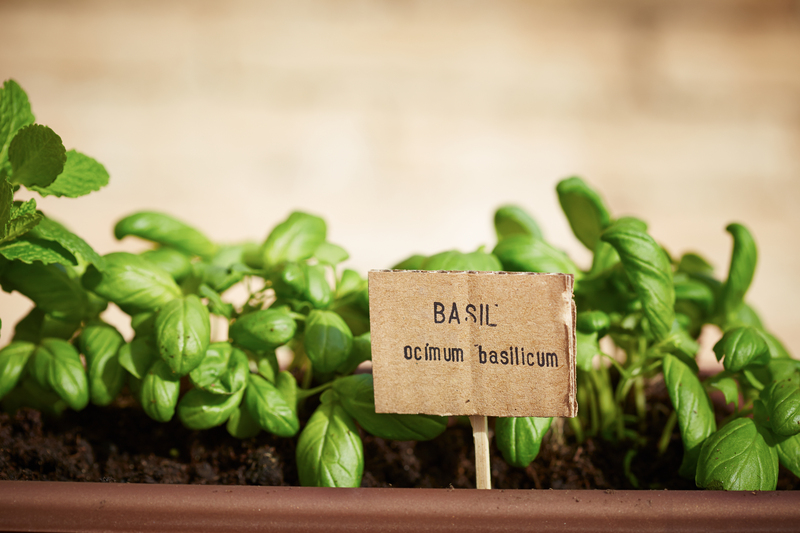Elevating Spaces with Herbal Beauty
Posted on 28/06/2025
Elevating Spaces with Herbal Beauty: Transform Your Environment Naturally
Discover how to uplift your living and working spaces through the transformative power of herbs and plants. With the growing trend of eco-friendly interiors and wellness-driven design, incorporating herbal beauty into your environment is more than just aesthetic--it's a lifestyle revolution. In this comprehensive guide, we explore unique ways to use herbs to beautify, purify, and invigorate your spaces.
Understanding the Power of Herbal Beauty
For centuries, herbs have been treasured for their soothing aromas, therapeutic properties, and vibrant aesthetics. Today, the concept of elevating spaces with herbal beauty fuses timeless tradition with contemporary design trends. By integrating herbs into your home or office, you enrich the space with natural fragrance, boost well-being, and create a visual feast for the senses.
- Purifying air and removing toxins naturally
- Generating a calming, spa-like ambiance
- Introducing subtle yet engaging sensory experiences
- Adding a sustainable and eco-conscious touch to decor
- Providing easy access to fresh, nutritious ingredients
Why Choose Herbs for Interior Enhancement?
The movement towards biophilic design celebrates our inherent connection to nature. Enhancing interiors with herbal elegance not only uplifts moods but also fosters a healthy, balanced atmosphere. Here are some compelling reasons:
- Air Quality Improvement: Many herbs like lavender, rosemary, and basil are natural air purifiers.
- Visual Appeal: The lush greenery and colorful blooms of herbs inject life into bland spaces.
- Stress Relief: Aromatic herbs can ease tension and anxiety, promoting mindfulness.
- Culinary Convenience: Fresh herbs at hand make healthy cooking easy and enjoyable.
- Sustainable Living: Growing herbs reduces your carbon footprint and supports eco-awareness.
Choosing the Right Herbs for Your Space
Not all herbs are created equal when it comes to interior beauty. Some thrive better indoors, while others supplement specific needs such as aromatherapy, air cleansing, or decor. Explore these herb options:
- Lavender: Known for its relaxing fragrance and delicate purple blossoms, perfect for bedrooms and relaxation zones.
- Rosemary: A striking, evergreen herb with invigorating scent--ideal for kitchens and study areas.
- Mint: Lively, fast-growing, and refreshing; wonderful for bathrooms, windowsills, and drinks.
- Basil: Bright and aromatic, adds both flavor and lush green beauty to kitchen nooks.
- Thyme: Compact and decorative, offers subtle aroma and easy maintenance.
- Parsley and Chives: Double as garnish and decorative accent for dining spaces.
- Sage: Velvety leaves and unique silvery hue make for artistic arrangement.
Creative Ways to Integrate Herbal Elegance into Your Space
Elevating your environment with herbal flair can be as simple or as elaborate as you like. Here are innovative methods for incorporating herbal beauty into various areas of your home or office:
1. Herbal Windowsill Gardens
Take advantage of natural light by placing potted herbs along windowsills. Choose attractive, coordinated pots for visual harmony. Mix and match different sizes and heights to create an organic, layered effect.
2. Vertical Herb Walls
Vertical gardens are both space-saving and stunning. Use wall-mounted planters or repurpose old wooden pallets to craft a living wall full of lush greenery and herbal scents. This technique adds texture and focal interest while maximizing your green real estate.
3. Elegant Tabletop Arrangements
Group small pots of sage, basil, and chives as a centerpiece for dining or coffee tables. For added charm, nestle candles among the pots, letting the herbal essence complement the gentle candlelight during gatherings or quiet evenings.
4. Hanging Herb Baskets
Suspend baskets of trailing thyme or mint from ceilings, creating an enchanting, floating garden effect. This method keeps countertops clear and adds whimsy and depth to the room.
5. Herbal Terrariums
For a modern, low-maintenance approach, create terrariums featuring succulents paired with sprigs of herbs like rosemary or oregano. The glass enclosure showcases the herbs' beauty and provides a stylish, contained ecosystem.
6. Herb-Infused Decorative Items
Add a unique sensory element with home-crafted items like:
- Scented herbal sachets tucked into drawers and closets
- Pressed herb art framed on walls for a botanical vibe
- Herb-infused candles to gently scent the air
- Potpourri bowls featuring dried lavender, rosemary, and sage
Herbal Beauty for Every Room
To maximize impact, tailor your herb-enhancement strategy to the function and feel of each area:
- Living Room: Centerpieces with rosemary and lavender add elegance and tranquility. Use stylish pots and cluster different heights for drama.
- Kitchen: A practical herb rack or wall of basil, parsley, and mint keeps ingredients fresh and within reach.
- Bathroom: Small pots of mint and eucalyptus work wonderfully--both thrive in steamy conditions and contribute freshness.
- Bedroom: Lavender or chamomile on side tables offers a calming, sleep-supportive environment.
- Office: Desk-friendly pots of rosemary or thyme can sharpen focus and purify air, promoting productivity.
DIY Projects to Elevate Spaces with Herbal Beauty
For those who love crafting, infusing your home with herbal charm can be both creative and therapeutic. Try these simple yet impactful projects:
Herbal Wreaths
Weave sprigs of rosemary, sage, and lavender into a wire frame to create a fragrant, decorative wreath for doors or mantelpieces.
Mason Jar Herb Gardens
Reuse glass jars by planting individual herbs. Place them on shelves, desks, or bathroom counters for a rustic, eco-friendly touch.
Herb-Pressed Wall Art
Press and dry your favorite herbs, arrange them between glass frames, and hang the finished pieces to bring a touch of greenery and artistry to your walls.
How Herbal Ambience Enhances Well-Being
The benefits of incorporating herbal decor extend far beyond aesthetics. Elevating your interior space with fresh, living plants imparts significant wellness advantages:
- Mental Clarity: Scents from herbs such as rosemary and mint can increase focus, alertness, and memory retention.
- Tranquility and Stress Reduction: Lavender, chamomile, and sage are proven to decrease anxiety and foster a sense of peace.
- Improved Sleep: Herbal aromas in the bedroom, especially lavender, can support restful sleep patterns.
- Allergy Relief and Air Purification: Many herbs possess antimicrobial and air-purifying properties, reducing allergens and harmful compounds in the air.
- Beauty Plus Nutrition: Having culinary herbs within reach encourages healthier cooking and eating.
Maintaining and Caring for Your Herbal Beauties
Keeping your herbs healthy and vibrant is key to maintaining their beauty and benefits. Here are some simple care tips:
- Light: Most herbs need 4-6 hours of bright, indirect sunlight daily.
- Water: Allow the soil to dry slightly between watering to prevent root rot; overwatering is the most common problem.
- Soil: Use well-draining potting mix. Herbs dislike soggy roots.
- Pruning: Regularly pinch back stems to encourage bushier growth and prevent flowering (unless for display).
- Temperature: Maintain moderate indoor temperatures; avoid drafts and extreme heat.
- Feeding: Fertilize sparingly with organic plant food during active growth periods.
Herbal Beauty for Outdoor Spaces
Don't limit your herbal transformation to indoors! Balconies, patios, and gardens can become lush sanctuaries overflowing with herbal beauty. Try:
- Creating a dedicated herb spiral garden for visual interest and efficient space use.
- Hanging baskets bursting with trailing mint or oregano for balconies.
- Bordering walkways with aromatic thyme to release scent as you stroll.
- Designing dedicated seating areas amidst tall rosemary and sage shrubs.
Outdoor herbal gardens also support pollinators like bees and butterflies, essential for a thriving ecosystem.
Eco-Friendly and Sustainable Sensibilities
Incorporating herbal beauty into your environment aligns with sustainable living. Herbs require minimal pesticides or chemical fertilizers, demand little water compared to traditional landscaping, and contribute to a circular lifestyle when their trimmings are used for culinary or crafting purposes.
Upcycling containers, composting herb trimmings, and propagating cuttings are easy ways to enhance eco-friendliness while indulging in green luxury.
Combining Herbal Beauty with Other Trends
Integrate herbal elegance with popular design elements for even richer, multidimensional spaces:
- Bohemian Interiors: Combine potted herbs with layered textiles and eclectic art for a cozy, lived-in feel.
- Minimalist Vibes: Choose monochromatic planters and streamlined herbs (like basil or rosemary) for clean, modern lines.
- Urban Jungle: Mix vibrant herbs with tropical houseplants for a lively, indoor jungle effect.
- Wellness Retreat: Use herbs alongside soothing colors, natural materials, and water features to create a holistic, spa-inspired haven.
Conclusion: Redefine Your Space with Herbal Beauty
Elevating your space with herbal beauty is more than a decor choice--it's a lifestyle statement embracing nature, well-being, and sustainable style. Through thoughtful selection, creative placement, and attentive care, your environment can blossom into an oasis of aroma, color, and tranquility.
Whether you're seeking greater peace, improved health, or simply visual delight, let the timeless charm of herbs enrich your everyday experience. Begin your journey today and transform your living or working space with the unmistakable magic of herbal beauty.



